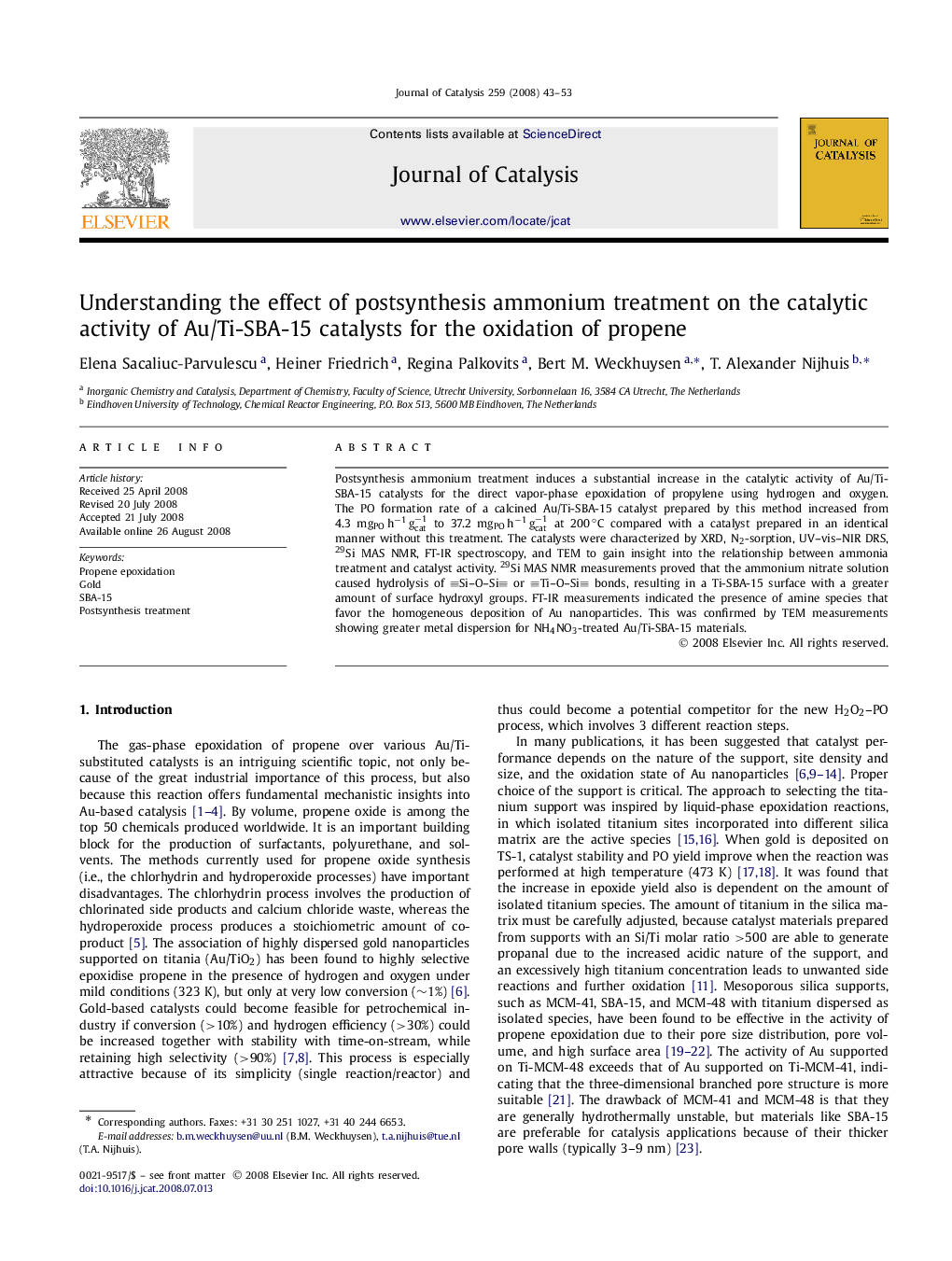| Article ID | Journal | Published Year | Pages | File Type |
|---|---|---|---|---|
| 62324 | Journal of Catalysis | 2008 | 11 Pages |
Postsynthesis ammonium treatment induces a substantial increase in the catalytic activity of Au/Ti-SBA-15 catalysts for the direct vapor-phase epoxidation of propylene using hydrogen and oxygen. The PO formation rate of a calcined Au/Ti-SBA-15 catalyst prepared by this method increased from 4.3 mgPO h−1 g−1cat to 37.2 mgPO h−1 g−1cat at 200 °C compared with a catalyst prepared in an identical manner without this treatment. The catalysts were characterized by XRD, N2-sorption, UV–vis–NIR DRS, 29Si MAS NMR, FT-IR spectroscopy, and TEM to gain insight into the relationship between ammonia treatment and catalyst activity. 29Si MAS NMR measurements proved that the ammonium nitrate solution caused hydrolysis of SiOSi or TiOSi bonds, resulting in a Ti-SBA-15 surface with a greater amount of surface hydroxyl groups. FT-IR measurements indicated the presence of amine species that favor the homogeneous deposition of Au nanoparticles. This was confirmed by TEM measurements showing greater metal dispersion for NH4NO3-treated Au/Ti-SBA-15 materials.
